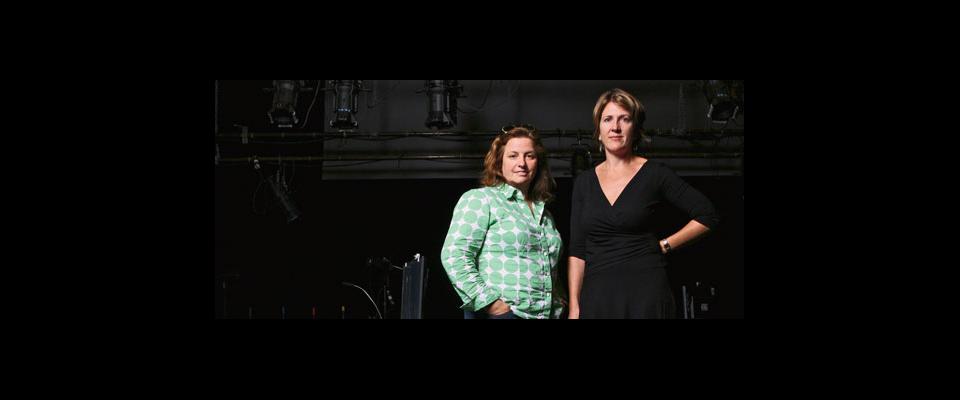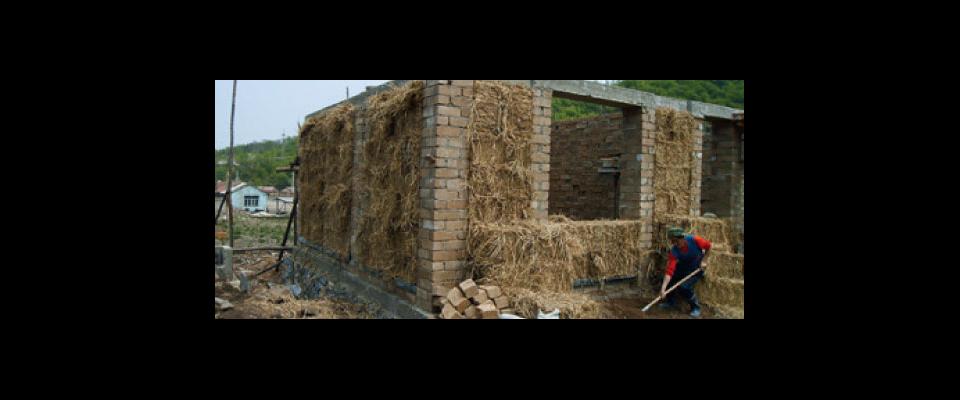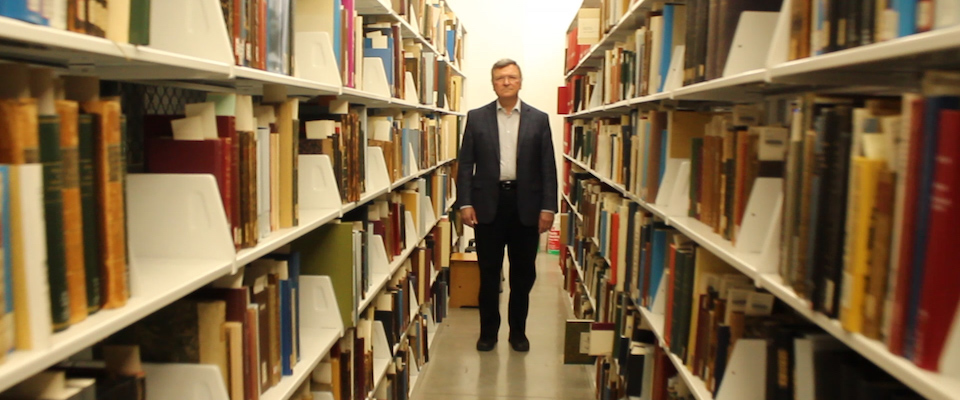Marianne Weems is artistic director of the New York–based Builders Association, the Obie Award–winning multimedia performance company known for breaking down the boundaries between stage and audience as they explore the impact of technology on human interaction. A performer with eclectic tastes, Weems has worked with Susan Sontag, musicians David Byrne and Fatboy Slim, and Disney. Now, as artist-in-residence at Cal’s Arts Research Center, Weems is workshopping her latest project, Continuous City, about how social networking sites both help and hinder relationships. At its heart it is a tender love story between people who meet online, but themes include global inequity and the rise of the megacity. She talks to Shannon Jackson, chair of the Department of Theater, Dance and Performance Studies.
Shannon Jackson: A number of people are interested in networks now and Continuous City is all about networks. Why is the theater a place for thinking about this?
Marianne Weems: Well, in our other recent projects—like, probably for the last eight years—the shows have been about human beings in these increasingly complex relationships to technology. So whether it’s a call center in India and how Americans and Indians relate through fiber-optic phone lines, or whether it’s JET LAG—the story of the woman who flew back and forth across the Atlantic 167 times until she died of JET LAG—all the stories are about people enmeshed in technology. I found that theater was still a very relevant place to stage that because there’s still the experience of seeing a live person on stage and having some slight visceral identification with them as a live human being, and then being able to literally stage the network around them.
But I have noticed, in working here, in sketching out ideas about Continuous City, that—and I remember this from other productions—it’s harder to stage a piece where the actors are communicating through cameras, because it makes the staging quite static. You still need to create, obviously, a world on stage. But the piece is very much about how people look at each other through video cameras, through video chatting, and, by extension, through all the networks that are attached to that. So one of the things we’re unpacking right now is how do you still make that an interesting theatrical experience?
What can people expect to see when they come to Continuous City and, in general, when they come to a Builders Association production?
Something that has a lot of visual impact. There’s a lot of video and, in this case, it’s on a couple of big screens. Among other stories, we follow these two characters, Sam and Lee, who meet online. It’s quite a moving little story, and it’s told very visually. There are a lot of close-ups. It’s almost a cinematic experience.
Can you talk about how you generated the “script” for this production?
All of our projects have very long gestation periods. It takes about two years from the first concept meeting to the actual premiere. Some of that is just fundraising, but a lot of that is a very careful series of workshops where we accrue material for the show. And it all starts with a central idea. In this case, it was the idea of social networking, but specifically about a father and a daughter, a very young girl who would be at home in a gated community, and her father out in the world, and all the networks that they’re connected to. So I had been working on that with my company at different workshops around the States.
When you very generously extended this invitation to us, I knew that I would come here and develop something around those ideas, with the students here. And then we’ll take what we’ve learned here, and in creating the website for this production, and some of the ideas about how to stage networks, and move that into the final production of Continuous City, which we’ll be rehearsing next year.
What do you imagine when you say you’re thinking about the next phase of development for Continuous City?
I read two books simultaneously that really made this project come together for me in a way that is kind of inexplicable. One is Invisible Cities, which I read every ten years, and it always has layers of depth and, I think, new meaning that are really unbelievable. And then I read Mike Davis’s book, Planet of Slums, which has gotten a lot of attention recently and brought to light this watershed moment where more people are living in cities than in rural environments for the first time in the history of the documented world. The agglomeration of the edges of the cities where these people live is a fascinating place that’s being studied by everybody from the Pentagon to Pentecostals because it’s an extremely rich, indeterminate zone where people are trying to find ways to survive in a new kind of city.
So in the most pretentious, far-reaching way, I want to somehow try to extend this idea of a network into those spaces. I’ve always been very interested in repurposing technology and how, for instance, in the favelas [Brazilian shanty towns], most people have cable TV because they just run it off of one line and then it runs through the entire favela.
What I’m hoping is in the next phase of this piece we’re going to travel to three of these so-called megaslums on the edges of world-class cities—Mumbai, Lagos, and Mexico City—and do some research, but really connect with artists who are already working there and try to engage them on some level with the website, so that there’s a way for them to continue to engage in the production as it grows and travels around the world for the next two or three or four years. It’s an ongoing, porous, interactive process where the piece can grow and expand depending on what happens in these location




















